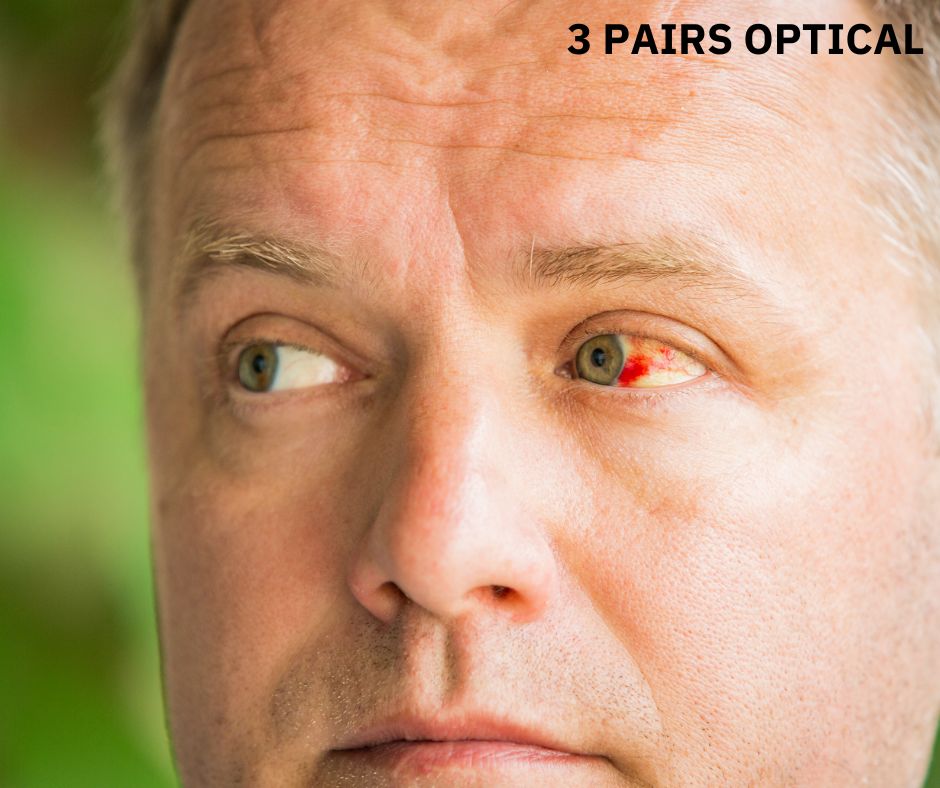When it comes to eye health, various conditions can impact the delicate structures of the eye. One such condition is a subconjunctival hemorrhage, which can be quite alarming due to its sudden and vivid appearance.
What is a Subconjunctival Hemorrhage?
A subconjunctival hemorrhage is a fairly common eye condition marked by bright red patches on the white part of the eye (sclera). These patches form when blood vessels in the conjunctiva, the transparent layer covering the sclera, rupture and blood leaks into the surrounding tissue.
Causes of Subconjunctival Hemorrhage
Several factors can lead to the development of a subconjunctival hemorrhage, including:
- Trauma: Injury to the eye, such as from rubbing, poking, or being struck, can cause blood vessels to break.
- Strain: Straining during activities like heavy lifting, coughing, sneezing, or vomiting can increase pressure in the blood vessels, leading to rupture.
- Medical Conditions: Conditions like hypertension (high blood pressure), diabetes, blood clotting disorders, and eye infections can heighten the risk of subconjunctival hemorrhage.
- Medications: Blood-thinning medications such as aspirin or anticoagulants may increase the chance of bleeding in the eye.
Symptoms
The most noticeable symptom of a subconjunctival hemorrhage is a bright red patch on the white part of the eye. Despite its alarming appearance, this condition is typically painless and does not impair vision. Occasionally, one might experience a slight scratchy sensation on the eye’s surface.
Diagnosis
Subconjunctival hemorrhage is usually diagnosed through a thorough eye examination. An eye care professional will use a slit lamp microscope to assess the hemorrhage's extent and rule out any underlying conditions.
Treatment
In most cases, a subconjunctival hemorrhage resolves on its own without medical intervention. The blood is gradually absorbed by the surrounding tissue, similar to how a bruise heals, and the redness fades over several days or weeks.
- Sunglasses: Wearing sunglasses can help conceal the redness if you're concerned about appearance.
- Avoid Irritants: Refrain from rubbing or touching your eyes to prevent further irritation.
- Artificial Tears: Over-the-counter artificial tears can soothe minor discomfort and keep the eye lubricated.
- Protective Eyewear: If the hemorrhage resulted from trauma or if you are at risk of further injury, consider wearing protective eyewear to prevent recurrence.
If you suspect a more serious underlying condition caused your subconjunctival hemorrhage or if you experience recurrent hemorrhages, consult your eye care professional for further evaluation and management.
Prevention
While it may not always be possible to prevent a subconjunctival hemorrhage, you can take steps to minimize your risk:
- Manage Underlying Conditions: Keep conditions like hypertension and diabetes under control through proper management and regular medical check-ups.
- Handle Your Eyes Carefully: Be cautious with activities that could potentially injure your eyes, and avoid rubbing or applying pressure to them.
- Be Cautious with Medications: If you are taking blood-thinning medications, closely follow your doctor’s recommendations and be aware of any potential side effects.

